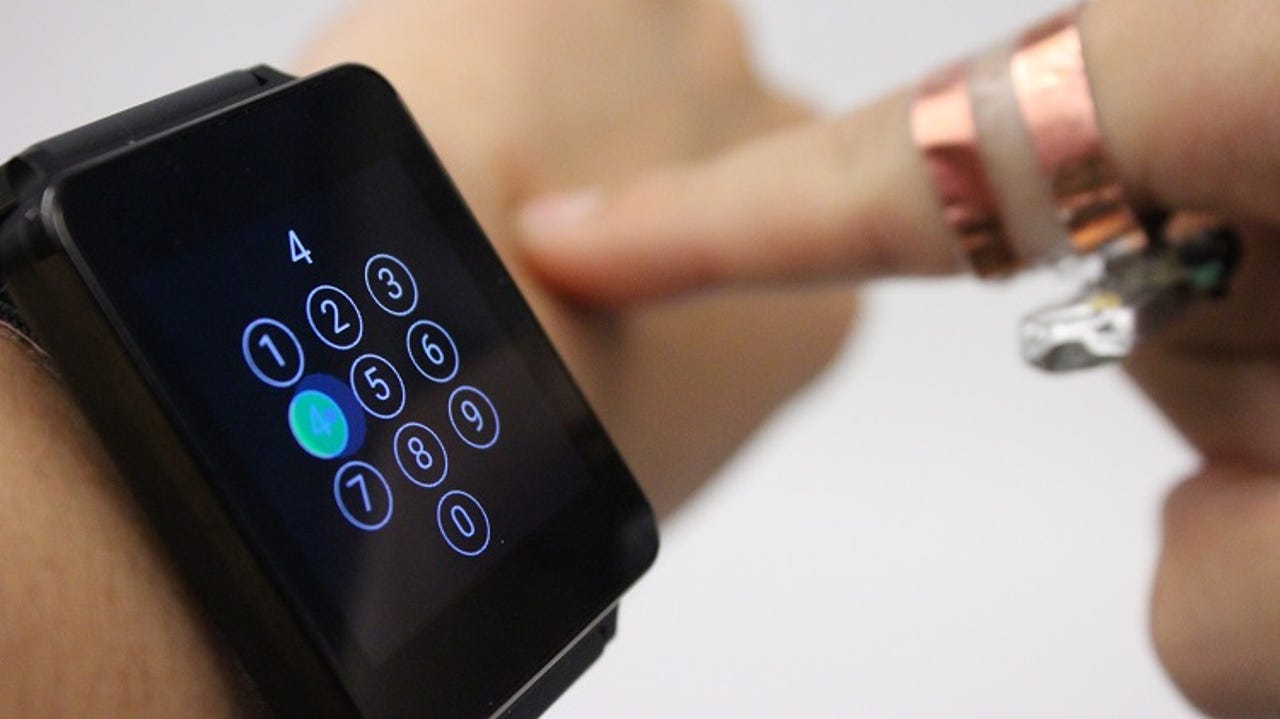This ring turns your skin into a touchpad


SkinTrack turns your arm into a control pad.
Smartwatches ... meh.
Gesture control ... yawn.
A low energy electric field coursing through your arm ... Huh?
Yup, a new wearable technology developed at Carnegie Mellon University will turn your entire lower arm into a touchpad.
Called SkinTrack and developed by the Human-Computer Interaction Institute's Future Interfaces Group, the new system allows for continuous touch tracking on the hands and arms, effectively making your skin a touchpad.
It's not the first time researchers have attempted "skin to screen" conversions. Previous approaches employed flexible overlays, interactive textiles, or projector and camera combinations. CMU's new tech, by contrast, uses a small ring or watch that propagates a low-energy, high-frequency signal through the skin.
"The great thing about SkinTrack is that it's not obtrusive; watches and rings are items that people already wear every day," said Yang Zhang, a first-year Ph.D. student in HCII.
"SkinTrack makes it possible to move interactions from the screen onto the arm, providing much larger interface," said Chris Harrison, assistant professor in the HCII and adviser to the research, referring to a problem with many wearables: small interface size. SkinTrack users wear a ring that produces a high-frequency electrical signal. When the finger gets near to the skin or touches the skin, that signal propagates through the skin.
Electrodes in the wearable pinpoint the source of electromagnetic waves created when users touch their arm.
Robotics
It's pretty darn accurate. The researchers found that they could determine when the finger was touching the skin 99 percent of the time within a mean error of just 7.6 millimeters.
The researchers showed that SkinTrack could be used as a game controller, to scroll through lists on the smartwatch, to zoom in and out of onscreen maps, and to draw. A number pad application enabled users to use the back of the hand as a dial pad for the onscreen number pad; hovering a finger over the hand acts as a cursor, highlighting numbers on the screen to aid in targeting touch points.
The system is promising, though currently there are some limitations. Keeping the ring powered up is a challenge, for instance. Signals also tend to change as the device is worn for long periods, thanks to factors such as sweat and hydration and the fact the body is in constant motion.
Still, this is some drool-worthy sci-fi technology, and it gives new meaning to the phrase, "they really push my buttons."